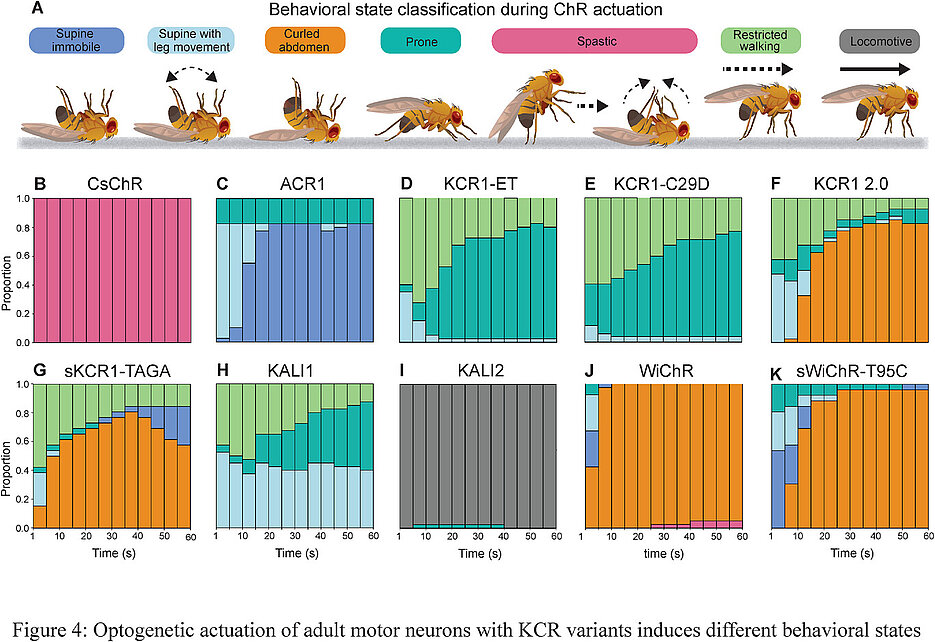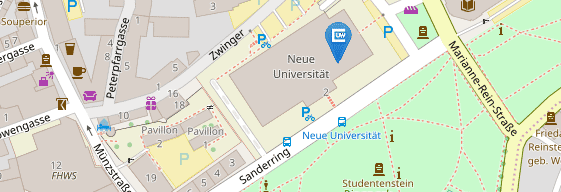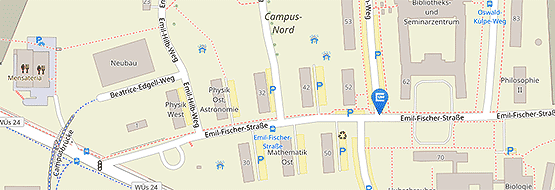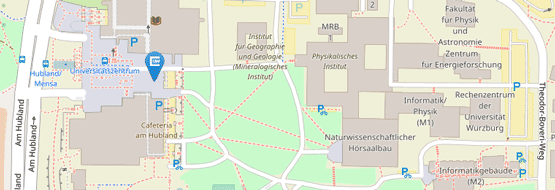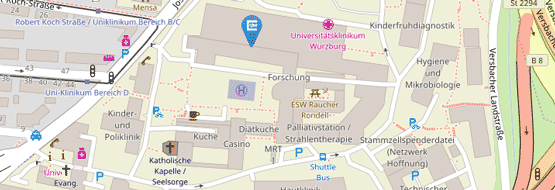Stabilized Ion Selectivity Corrects Activation Drift in Kalium Channelrhodopsins
11/09/2025Stabilized Ion Selectivity Corrects Activation Drift in Kalium Channelrhodopsins
Xiao Duan, Chong Zhang, Stanislav Ott, Zhiyi Zhang, Christiane Ruse, Sven Dannhäuser, Robert Jacobi, Nadine Ehmann, Divya Sachidanandan, Georg Nagel, Manfred Heckmann, Robert J. Kittel, Alexander Gottschalk, Adam Claridge-Chang, Shiqiang Gao (2025)
Adv. Sci. 2025,e09180
Effective optogenetic inhibition of neuronal activity requires tools that reliably silence neurons across cell types and conditions. K+-selective channelrhodopsins (KCRs) have emerged as attractive alternatives to chloride-conducting channels for optogenetic inhibition of cellular excitability, but many KCR variants exhibit an ion selectivity shift toward Na+ under prolonged illumination. Through behavioral and electrophysiological analyses in Drosophila, and Caenorhabditis elegans, it is found that both the absolute K+ to Na+ permeability ratio and its stability over time determine the inhibition to activation transition, which limits their utility for silencing neural circuits. Among tested variants, the KCR1-C29D mutant shows a relatively high and the most stable K+ to Na+ permeability ratio during illumination. While other KCR variants often evoke excitatory responses, KCR1-C29D consistently provides robust in vivo inhibition across cell types, illumination conditions, and species. This work addresses a key limitation of KCR optogenetics and establishes KCR1-C29D as a superior and reliable inhibitory tool. These findings highlight the stability of ion selectivity as a design criterion and provide guidance for the design of next generation optogenetic tools.

